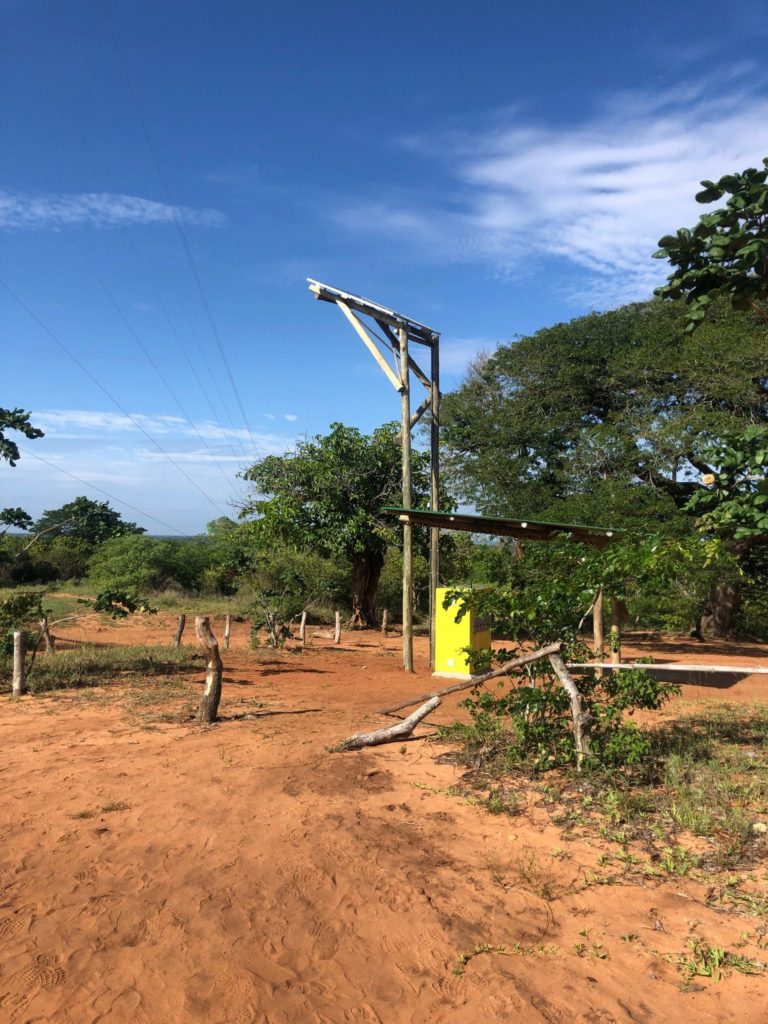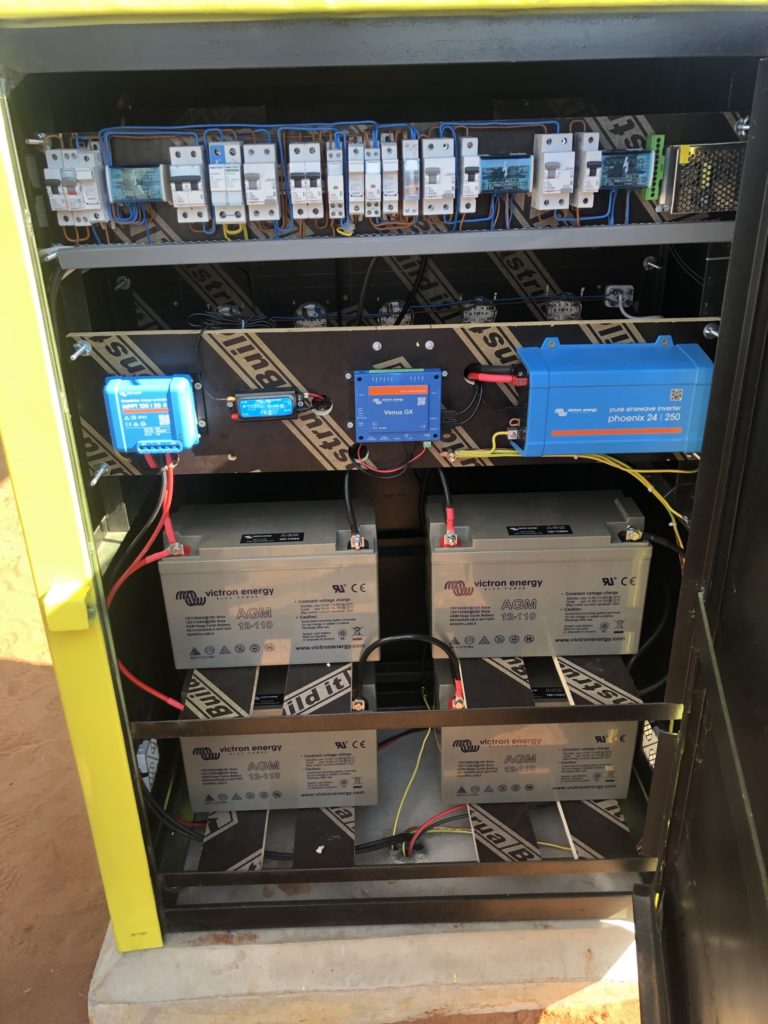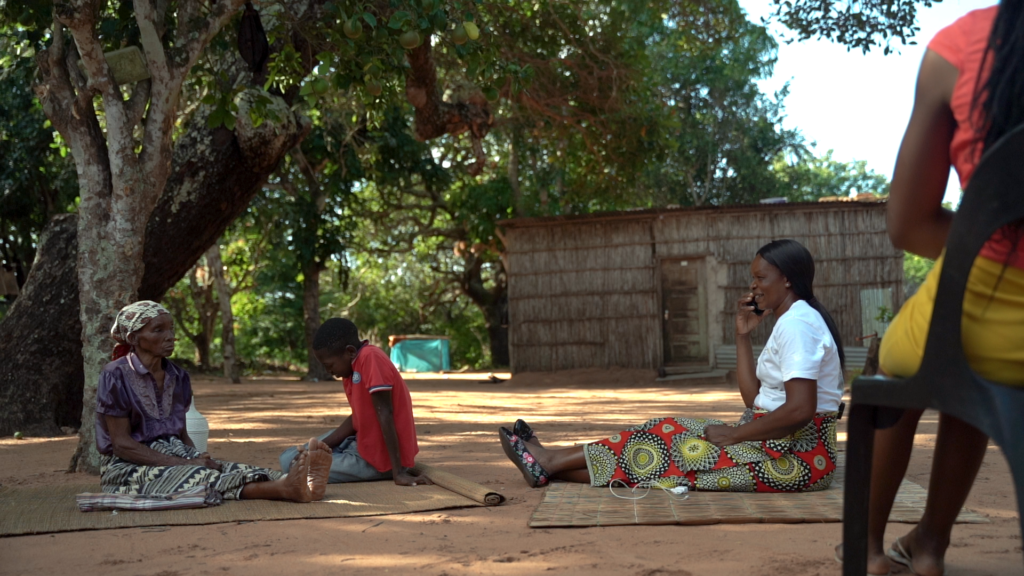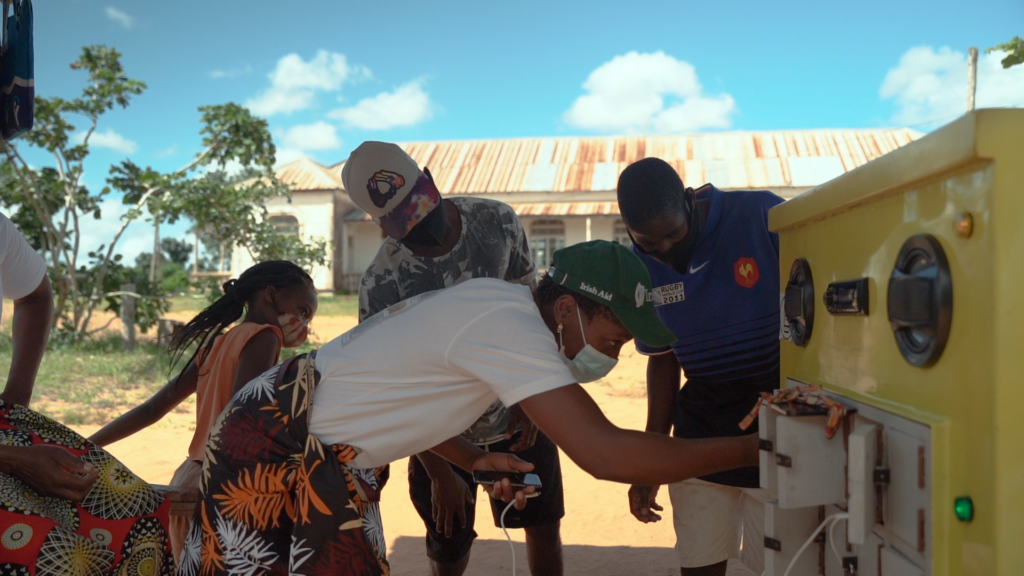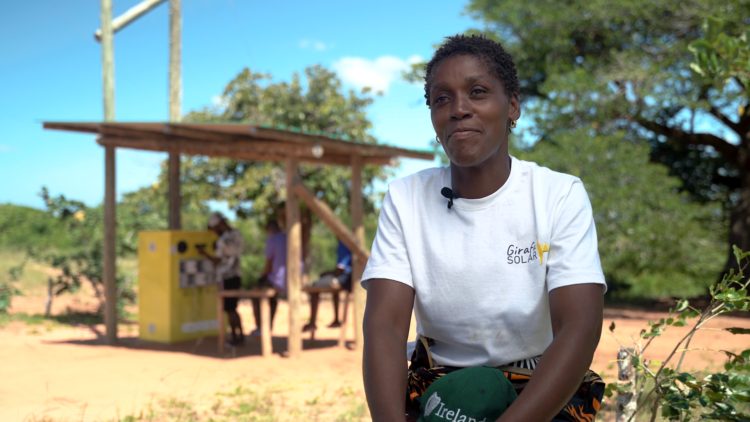
The community of Mangunze, in Gaza, Mozambique have been promised grid electricity for years. Although the grid passes in close proximity, years have gone by, and yet a connection has still not been completed.
Some community members have small solar panels on the roofs of their houses – but not everyone can afford that investment. When it comes to charging mobile phones those without panels have either to ask neighbours for help, or pay for recharging commercially.
Solar Giraffe is the solution to their problems. It’s design incorporates an elevated platform for two large PV panels; battery storage so that the charging station can still be used when cloudy weather persists for days; phone charging points are contained in lockers – so that users can do other things whilst their phone is charging; light allows for night time community gatherings; and a radio provides news and entertainment.
What’s in the cabinet?
Power from the panels is harvested by a BlueSolar MPPT 100/30 for storage in four heavy duty AGM batteries providing 220Ah at 24V. A Phoenix 24V 250W inverter provides power to ten phone charging outlets. A Venus GX communication device harmonises charging and power provision, and ensures long battery life by preventing the batteries from becoming too depleted. The GX device also enables remote system performance monitoring by installation team by communicating with a GX GSM which transmits small economical data packages wirelessly via the mobile phone network, to the free-to-use Victron Remote Management (VRM) platform where performance can be examined in-depth.
The system is protected by circuit breakers and RCDs.
The solar system design was carried out with help from Frangilio Nhanale of Logos Industries.
Two managers have been employed and trained to educate users about how solar energy is harvested and stored, and how they can use the facility thoughtfully and carefully.
Sónia Preciosa Langa (pictured above) is a 47 year old mother of four who lives in the village. She says that the availability of electricity would allow her and others to start a business – without it they are unable to do anything. She says that if electricity came to the community she would feel that they had evolved.
In the early days she couldn’t imagine that the Solar Giraffe would be useful – but now that it has arrived and is providing almost 300 phone recharges per month regardless of the weather, she is very pleased with the development and enjoys helping her community ‘brothers’ use the Solar Giraffe.
The Solar Giraffe was designed by Ruben Ferreira Morgado who works as an architect and sustainable designer with the Carlos Morgado Foundation. He carried out extensive research among community members to make sure that the design would be useful to their need. This led to the development of a facility which provides not only phone recharging, but it is also a space where the community can gather to listen to broadcast music and news, and to discuss their everyday struggles and successes. Because of it has proved so popular, five more are planned in early 2022.
Speaking moments after the inauguration, the District Administrator, Carlos Buchili, said “This project exactly brings this clean energy, renewable energy and that our population has the possibility to charge phones, listen to the radio and in short it is a space for sharing ideas. ”
The promoters of the project, the Carlos Morgado Foundation, and Associacão Nyikani Mavoko – supported by the Mozambiqe Women of Energy – secured funding from the Embassy of Ireland, whose representative Ambassador Nuala O ‘Brien, provided 500,000 meticais for the scheme – equivalent to about €7000.
Solar Giraffe was installed in the catholic church site, Missão de São Benedito de Mangunze.
“This project is welcomed to the Mission of São Benedito de Mangunze because it will help our brothers who have difficulties in charging the phone in their homes, because this solar panel story is not just anyone who has it, and it will help a lot. I think it is a huge leap for the people of Mangunze. Sometimes people came to Mass on Sundays and everyone went with their phone and wanted to be the first to charge in the church.“, said one of the residents of Mangunze.
